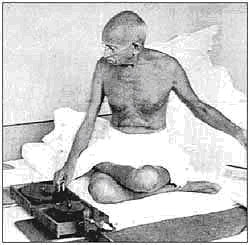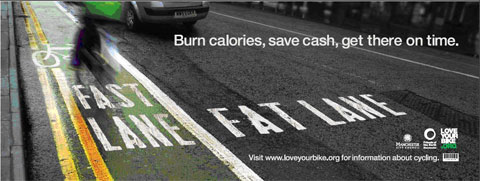Can Design Change Us?
An article by my colleague Radhika got me thinking about the potential of establishing long term and large-scale change in peoples’ attitudes, through design. Can systems and experiences be designed to make people fall into entirely new patterns of behaviour? Design thinkers, strategists and practitioners have been doing this all along. They identify a behavioural goal (e.g. reduce misconceptions about transgenderism) and then apply the best systems, ideas, experiences, and technologies to enable better realities in the future. What follows is a patchwork look through some such attempts.
Let’s take Mahatma Gandhi and the box-charkha. The box-charkha was empowering as it enabled Indians to make their own cloth anywhere, and freed them from the exploitative British textile industry. It was affordable, hand-powered and easy to use and thus spread the idea of a more just society. Weaving and wearing homespun cloth created a sense of self-reliance, independence and passive resistant revolution. Gandhi often spun in public to encourage men to break away from traditional gender roles.
Gandhi’s practice of cleaning toilets worked on similar lines. It challenged the widespread notion that only low castes do ‘lowly’ jobs such as garbage disposal and cleaning of public toilets. If any job can be done by anybody of any caste, then all castes will share the same social standing. Over time, people belonging to the ‘lower’ castes will no longer be forced to live in abject poverty and ignorance, doing ‘shameful’ menial jobs, for negligible pay. His coining of the word ‘harijans’ (children of God), to refer to people labelled ‘untouchables’, was another attempt to elevate their social status.

Here is a quote from Graphic Advocacy, an exhibition of posters from 2001-2012, to illustrate the impact posters have on us:
"As a medium for social change, posters record our struggles for peace, social justice, environmental defence, and liberation from oppression. From the confrontational and political, to the promotional, persuasive and educational, the poster in all its forms has persisted as a vehicle for the public dissemination of ideas, information and opinion. Posters are dissent made visible—they communicate, advocate, instruct, celebrate, and warn, while jarring us to action with their bold messages and striking iconography…"
‘Behavioural change design’ has been used effectively in sustainability. Design companies are changing their vision and processes to design for low energy consumption/waste/CO2 emission and high recyclability, with the idea that this philosophy will pass on to users. Various campaigns at national and local levels are trying to bring about changes in user behaviour - the switch from using a car to using a bicycle or public transport to lower pollution, or a small fee for shopping bags to encourage people to re-use their bags, or schemes for setting up alternative energy sources at home. All these initiatives are also helping to create social pressures, which are compelling people to use energy efficiently, recycle, and share.

When a group of designers, advocates and funders get together and say ‘everyone deserves good design’, it changes attitudes within the design community about the meaning and purpose of design itself. Public Interest Design is a movement that aims at making good design much more readily accessible to historically under-resourced communities. Architects, designers and planners are democratizing design through community design, humanitarian design, and pro bono design, because they believe that people at all income levels deserve quality spaces and products.
Ideo is doing the same thing with ‘Quality Design for the Poor’. They say that serving the poor should go beyond affordability, to reframe individual and community status, design for shifting aspirations, and boost dignity throughout experiences.
We are seeing an emerging group of social entrepreneurs, tech innovators and design thinkers that have started to develop technologies, products and services that cater to the actual needs and contexts of marginalized groups, but go beyond the traditions of community outreach and empowerment. Marginalized communities are no longer seen as simply aid recipients. They are now being trained to be mutual co-creators and policy-drivers of their communities.
Israel Loves Iran is a social media movement to promote peace between Israel and Iran. It started quite simply (like many of these things do). Ronny Edry, an Israeli graphic designer, posted the following image on Facebook. This triggered a flurry of such exchanges between people from the two countries, and turned into a full-fledged campaign to communicate love and goodwill. It also triggered other campaigns like ‘Iran Loves Israel’ and ‘Palestine Loves Israel’.
Watch Ronny Edry’s TED talk.
Dan Lockton’s ‘Design for Intent’ toolkit offers a design strategy for influencing behaviour by:
- Motivating users to change behaviour through education, incentives and changing attitudes
- Enabling ‘desirable’ behaviour by making it easier for the user than the alternatives
- Constraining users to ‘desirable’ behaviour by making alternatives difficult or impossible
Coming back to Radhika’s question on creating employability for transgendered people in India, how well can we use design to influence how human beings relate to other human beings? How can we enable broader change and stimulate desirable human practices?


